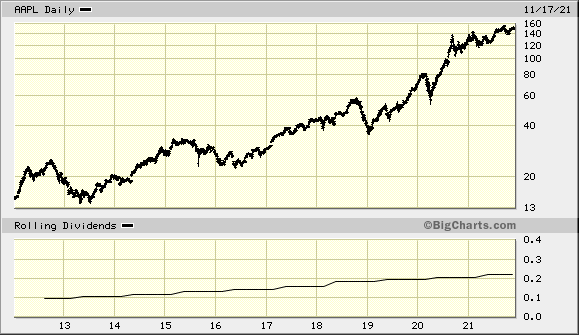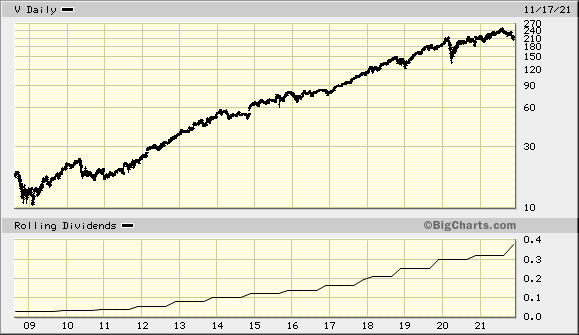
Dividend Initiators: A Fertile Ground For Research
As part of my Dividend Growth Investing strategy, I have always looked to invest in companies that have managed to grow dividends for at least a certain number of years. The logic is that only a company with a certain type of business can afford to grow dividends over a full business cycle.
Historically, a business cycle lasted five years or so. I always looked for companies that can potentially grow dividends for years, if not decades down the road. I am the type of investor who wants to assemble a portfolio of quality dividend growth stocks that grow earnings, dividends and intrinsic values over time, and then sit back and let the power of compounding do the heavy lifting for me. I do not like to trade in and out of stocks, and I do want to focus on companies in industries with slow rate of change that can afford to grow for years, without having to tinker. I am a long-term investor, who plans to hold forever. That is, until the dividends are cut, or the company is acquired.
The argument against waiting for 10 or 25 years of consecutive annual dividend increases is that I may be potentially leaving a lot of money on the line.
That being said, over the past 15 years or so, I have observed a lot of good companies with lower dividend streaks reward shareholders fantastically well. A lot of these companies are the types that I knew, and I understood.
A few notable dividend initiators include:
Apple (AAPL), which declared a dividend on July 24, 2012, but first announced it in March 2012.. The stock has done ok since then.
Starbucks (SBUX), which declared its first dividend in March 2010.
Tractor Supply (TSCO), which declared its first dividend in March 2010. Check my analysis of Tractor Supply here.
Visa (V), which initiated a dividend in August 2008.
Microsoft (MSFT), which initiated a dividend in early 2003, right after the dot-com bubble collapsed
Of course, this is not a method that would be right 100% of the time. If you bought Gilead Sciences (GILD) when it initiated a dividend, you would have lost money.
I believe that a good screening process could involve looking for new dividend initiators, and then monitoring financials. When the dividend is increased for the first time, it may be time to review financials and valuation, before determining if the business makes sense.
That being said, when investing in companies that have only raised dividends for an year or so, I would expect a higher turnover rate. In other words, companies that just recently start paying dividends may end up cutting them if they turn out to be more cyclical than previously believed. They may also be more likely to not care as much about growing dividends in the future. It would be hard to know in advance how serious management is about building a streak of annual increases in advance. On the other hand, some of these companies may end up being taken over too.
I do believe however that these dividend initiators may offer a very good opportunity to make above average total returns and very high yields on cost. These are businesses that have grown for a long time, and finally realize that they are making more than what they can reinvest. This shows that management is prudent and self-aware. In quite a lot of these cases, management is still deploying a lot of capital for future growth projects, and the growth trajectory is far from over. Just as I mentioned above however, be aware that most of these businesses may not be able to grow dividends for a long time, versus what I would expect from a dividend achiever or an aristocrat. For some of them however, they could realistically grow that dividend for decades. These rare companies would likely generate a lot of profits and probably compensate for many mistakes along the way from the ones that fizzle out.
Relevant Articles:
– Seven Dividend Stocks in the News
– Should dividend investors care about Apple’s Dividend?
Published at Wed, 17 Nov 2021 17:04:20 -0800









